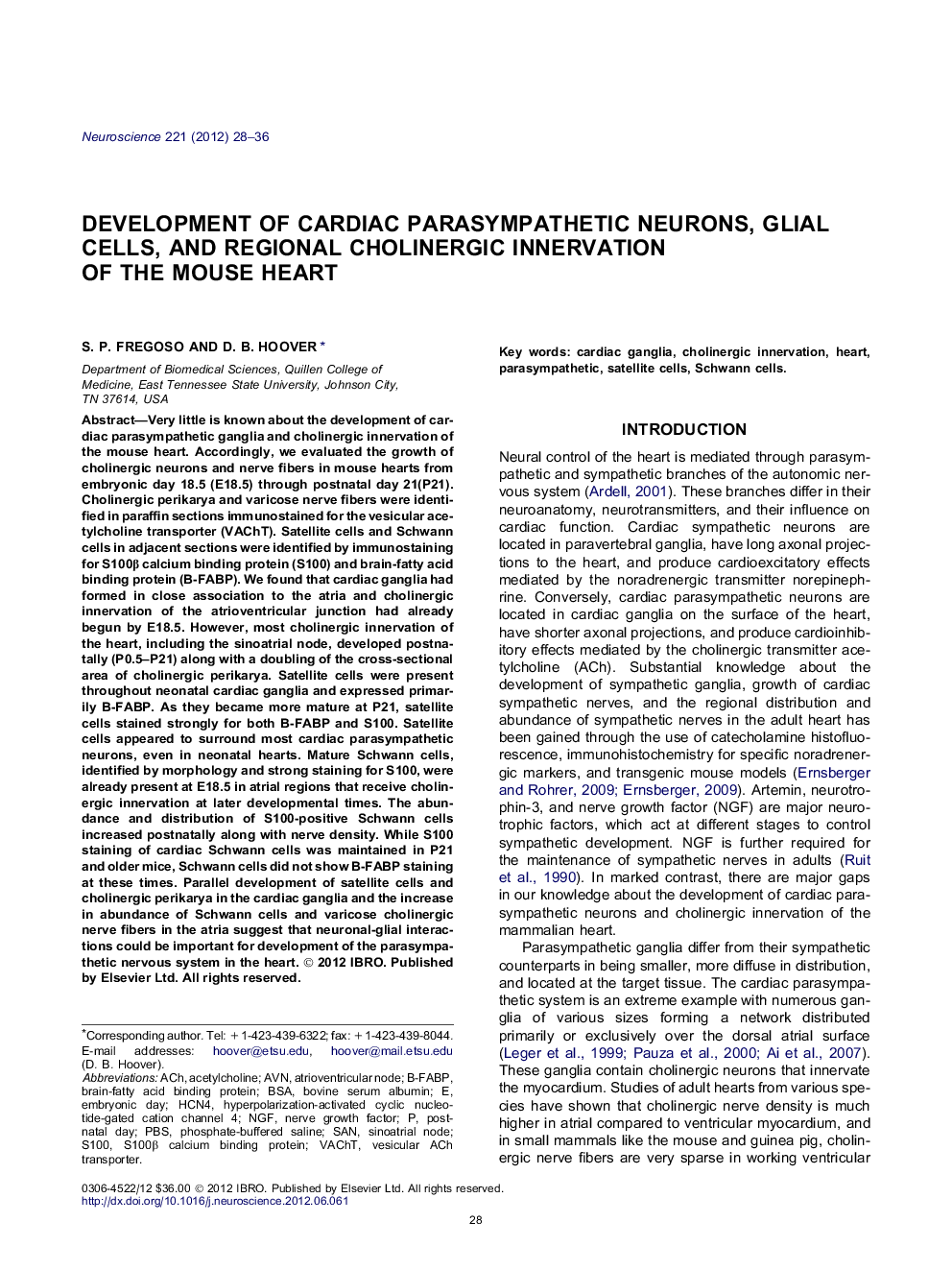| کد مقاله | کد نشریه | سال انتشار | مقاله انگلیسی | نسخه تمام متن |
|---|---|---|---|---|
| 4338303 | 1614855 | 2012 | 9 صفحه PDF | دانلود رایگان |

Very little is known about the development of cardiac parasympathetic ganglia and cholinergic innervation of the mouse heart. Accordingly, we evaluated the growth of cholinergic neurons and nerve fibers in mouse hearts from embryonic day 18.5 (E18.5) through postnatal day 21(P21). Cholinergic perikarya and varicose nerve fibers were identified in paraffin sections immunostained for the vesicular acetylcholine transporter (VAChT). Satellite cells and Schwann cells in adjacent sections were identified by immunostaining for S100β calcium binding protein (S100) and brain-fatty acid binding protein (B-FABP). We found that cardiac ganglia had formed in close association to the atria and cholinergic innervation of the atrioventricular junction had already begun by E18.5. However, most cholinergic innervation of the heart, including the sinoatrial node, developed postnatally (P0.5–P21) along with a doubling of the cross-sectional area of cholinergic perikarya. Satellite cells were present throughout neonatal cardiac ganglia and expressed primarily B-FABP. As they became more mature at P21, satellite cells stained strongly for both B-FABP and S100. Satellite cells appeared to surround most cardiac parasympathetic neurons, even in neonatal hearts. Mature Schwann cells, identified by morphology and strong staining for S100, were already present at E18.5 in atrial regions that receive cholinergic innervation at later developmental times. The abundance and distribution of S100-positive Schwann cells increased postnatally along with nerve density. While S100 staining of cardiac Schwann cells was maintained in P21 and older mice, Schwann cells did not show B-FABP staining at these times. Parallel development of satellite cells and cholinergic perikarya in the cardiac ganglia and the increase in abundance of Schwann cells and varicose cholinergic nerve fibers in the atria suggest that neuronal-glial interactions could be important for development of the parasympathetic nervous system in the heart.
► Cardiac ganglia form and receive cholinergic input prenatally.
► Cholinergic innervation of the atrioventricular junction begins prenatally.
► Cholinergic innervation of the sinoatrial node and other cardiac regions develops postnatally.
► Cholinergic perikarya double in size and satellite cells mature over the first 21 days postnatally.
► The distribution and abundance of Schwann cells in mouse heart increase postnatally.
Journal: Neuroscience - Volume 221, 27 September 2012, Pages 28–36